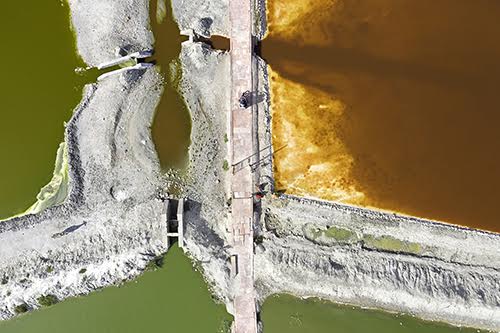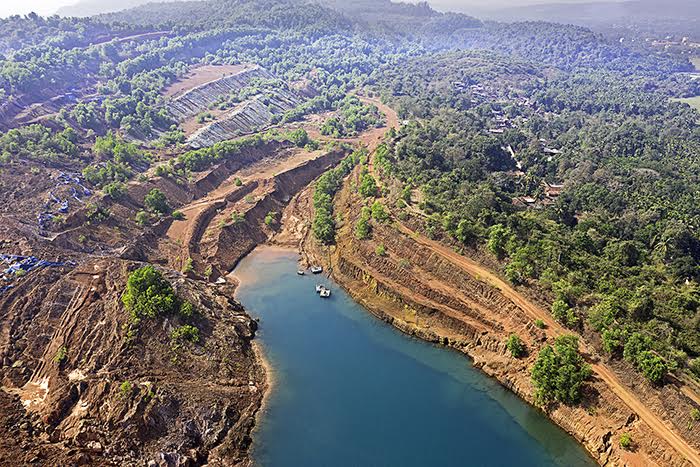Payal Kakkar’s photography exhibition offers a bird’s eye view for those who appreciate art and care about the environment. The hindrances to the country’s ecology growth become apparent through the disclosure of various environmental problems. The exhibition highlights the issue of our country’s inadequate environmental protection. Her artistic vision draws an invisible line between waste and the concept of beauty. She uses shadows in a very creative way that blends well with the rest of her pictures. The subject of her artwork consistently incorporates a human component and sheds light on individuals who have suffered due to governmental avarice and endured challenging circumstances. Through the use of drones, she managed to film awe-inspiring scenery which grants viewers an enhanced perspective on the landscapes impacted by human consumption and activity. Through a meticulous analysis of her work, one can discern the contrast between utilising resources out of necessity and doing so out of self-centered motives.
With no formal training, Payal Kakkar has become a self-taught artist utilizing the camera as a powerful medium to shed light on significant matters.The photographer seamlessly incorporates elements from both documentary and artistic styles to create her own distinctive approach. Since 2014, she has been regularly visiting Goa for a period of time every year, while residing in Delhi. The realization of the correlation between human influence on ecosystems and their consequences struck her after experiencing the floods in Kerala in 2018. From that point on, she has been employing her photography talent to directly influence conservation endeavors. She often works with environmental and community activists. She focuses her photography on illustrating the correlation between human actions and their consequences on the environment. Her particular focus is on examining the detrimental impact on the local residents when excessive exploitation of nature and resource depletion occur. Her exceptional photography earned her a finalist spot in both the Chennai Photo Biennale 2022 Iyarkai Grant and the ‘State of the World’ Paris Photo Prize (Px3). The Budapest International Foto Awards 22 and the Indian Photo Festival 2022 both acknowledged it. In 2021 and 2022, it was nominated for the Sienna Drone Awards.
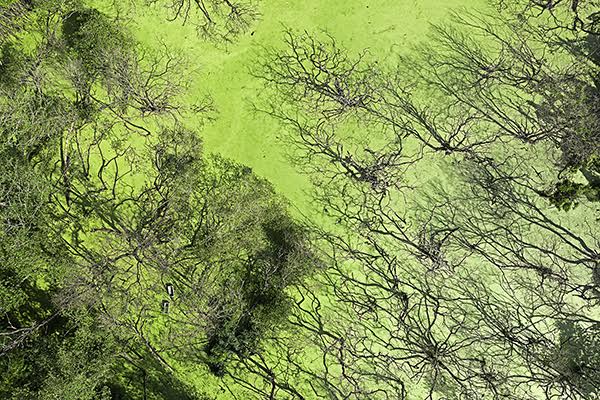 By depicting the damage inflicted on the environment and humanity, the images bring our attention to the harm caused by people. These instances additionally serve as a poignant reminder that, in spite of experiencing significant degradation, the land continues to possess abundant beauty. The intent of these images is to establish an emotional bond with the observer through the utilization of aesthetic appeal. This is important because we are constantly bombarded with upsetting images of disasters in the media. The purpose of these images is to motivate individuals and instill in them a sense of optimism. The exhibition shows three different sets of work: one about how mining affects the environment and mangrove trees in Goa, another Saltpans of Kutch and Sambhar Salt lake, and a third about how mining affects the indigenous village communities in Singrauli, Madhya Pradesh.
By depicting the damage inflicted on the environment and humanity, the images bring our attention to the harm caused by people. These instances additionally serve as a poignant reminder that, in spite of experiencing significant degradation, the land continues to possess abundant beauty. The intent of these images is to establish an emotional bond with the observer through the utilization of aesthetic appeal. This is important because we are constantly bombarded with upsetting images of disasters in the media. The purpose of these images is to motivate individuals and instill in them a sense of optimism. The exhibition shows three different sets of work: one about how mining affects the environment and mangrove trees in Goa, another Saltpans of Kutch and Sambhar Salt lake, and a third about how mining affects the indigenous village communities in Singrauli, Madhya Pradesh.
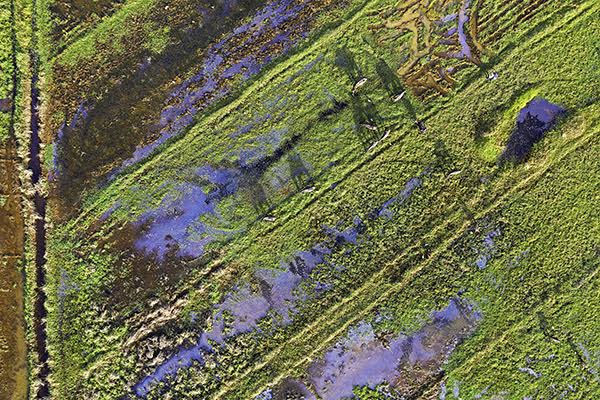 When asked about her motivation for these works, she explained: Let us spread the understanding that in our own distinct ways, everyone has the potential to bring about meaningful change. Our perception needs to be altered, and this alteration will have an impact on us as well. Despite the evidence of my actions, it is evident that we all possess the capability to produce less waste in our households, yet we consciously decide not to exercise it. We are presented with numerous possibilities for reusing objects, yet we consciously decide not to capitalize on these opportunities. Although we have the choice to acquire less clothing, we intentionally refrain from doing so. This is something we can do to help the environment. We have the ability to contribute towards environmental conservation. How humans are causing changes in landscapes. The Anthropocene’s pace has been hastened due to our actions and the destruction inflicted on the soil. How earth and water are changing their relationship. People’s engagement is resulting in a shift in the dynamics of the relationship. Therefore, people need to alter their behaviors. We need to determine how much progress is satisfactory. We must make a clear boundary. Why do we have to cut down our trees? Sal forests are important for our country. Why do we have to chop them down? Is it for mining? Is it to produce electricity? But, do we really have to do that? Maybe it is a necessary industry, but we can manage and limit it. The coal found in India is of low quality to generate power. This is the first time in India that we are mining for business reasons. The trees in the forest are being cut down. The native people living there have been extracted and displaced. The rules are being twisted, and the laws to protect the land of native people are also being ignored.
When asked about her motivation for these works, she explained: Let us spread the understanding that in our own distinct ways, everyone has the potential to bring about meaningful change. Our perception needs to be altered, and this alteration will have an impact on us as well. Despite the evidence of my actions, it is evident that we all possess the capability to produce less waste in our households, yet we consciously decide not to exercise it. We are presented with numerous possibilities for reusing objects, yet we consciously decide not to capitalize on these opportunities. Although we have the choice to acquire less clothing, we intentionally refrain from doing so. This is something we can do to help the environment. We have the ability to contribute towards environmental conservation. How humans are causing changes in landscapes. The Anthropocene’s pace has been hastened due to our actions and the destruction inflicted on the soil. How earth and water are changing their relationship. People’s engagement is resulting in a shift in the dynamics of the relationship. Therefore, people need to alter their behaviors. We need to determine how much progress is satisfactory. We must make a clear boundary. Why do we have to cut down our trees? Sal forests are important for our country. Why do we have to chop them down? Is it for mining? Is it to produce electricity? But, do we really have to do that? Maybe it is a necessary industry, but we can manage and limit it. The coal found in India is of low quality to generate power. This is the first time in India that we are mining for business reasons. The trees in the forest are being cut down. The native people living there have been extracted and displaced. The rules are being twisted, and the laws to protect the land of native people are also being ignored.
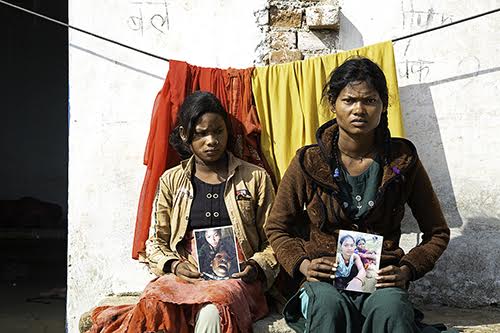
Beauty and toxicity coexist simultaneously in my work. I want to make people think differently about the way we behave. Consequently, I am portraying it in a way that you find captivating or appealing, rather than solely focusing on its toxicity. The first topic is about Goa, which includes the mangrove forest, the Khazans, and the mining activities in Goa. The environment of Khazan is different now because we allowed water to enter the fields through broken buns, which caused them to lose their ability to grow plants well. We must comprehend that the Khazan’s ecology is crucial for keeping the water out of the land. My first experience with drone technology was to investigate the Khazans. I am amazed by how the land and water blend their colors together. I became interested in Khazans and learned that there is more than just beauty. Additionally, there exists a concealed toxicity while the water displays diverse forms.
Payal’s work offers a different perspective to see the ground. At an elevation of 100 meters, one can enjoy a picturesque vista and marvel at various aspects like shape, color, lines, and forms. The exhibition’s title supports the idea of putting something in the spotlight and relates to the word “foreground,” which means making something more important. It also means the same thing as the art term “foreground,” which is the part of a picture that is closest to the person looking at it. It is intriguing that capturing photographs from a bird’s eye view causes the foreground and background to merge, revealing only the ground in the picture. The exhibition by Payal Kakkar, titled “For Ground,” will be on display from July 13th until July 21st at Triveni Kala Sangam, Mandi House. It’s a “not to miss” event for every Delhite this month.
Feature image courtesy : Abhishek Dixit
Image courtesy: Abhishek Dixit

Contributor




